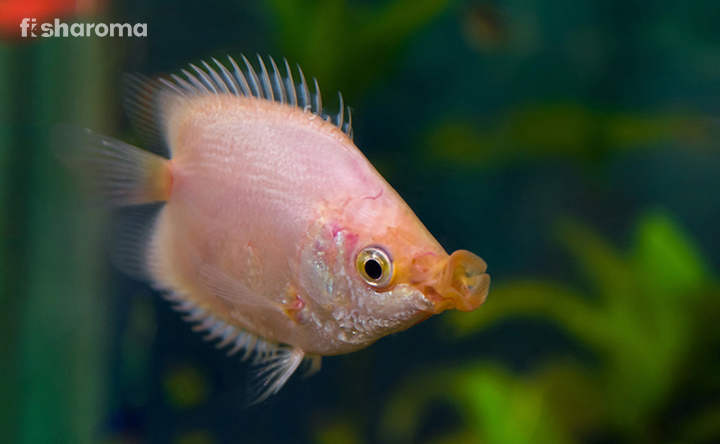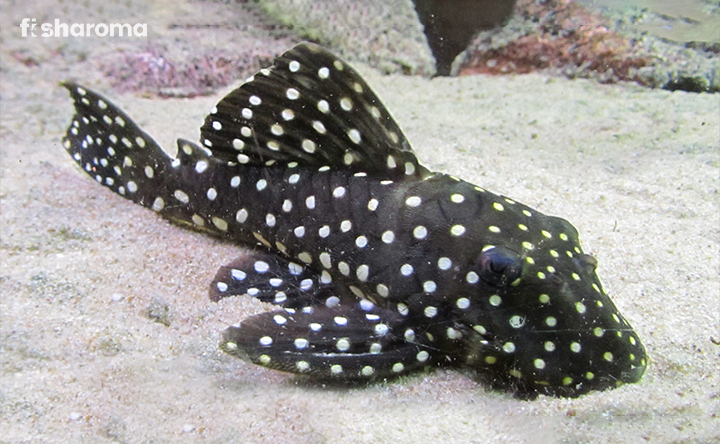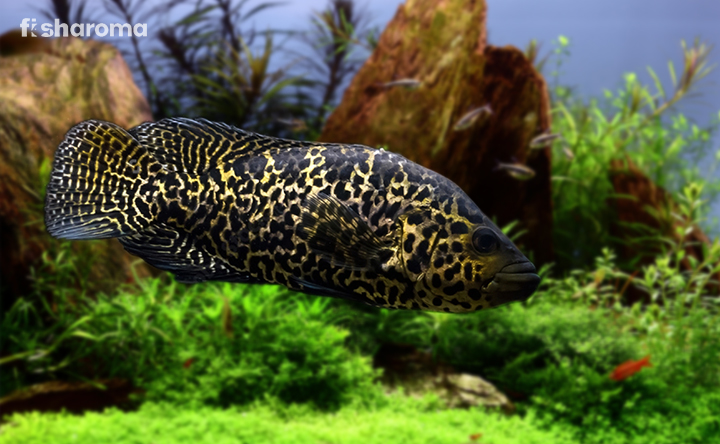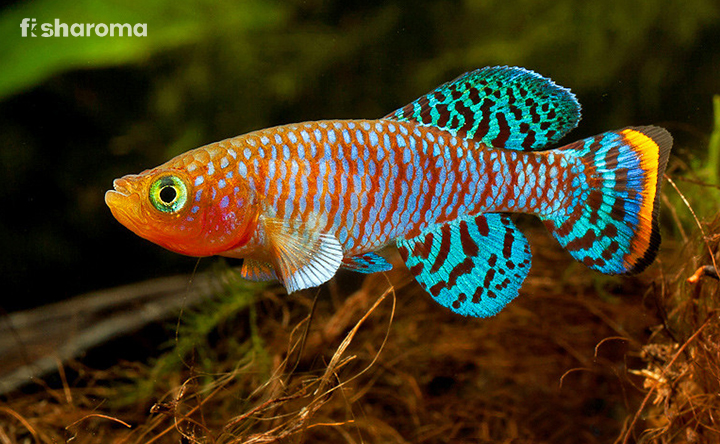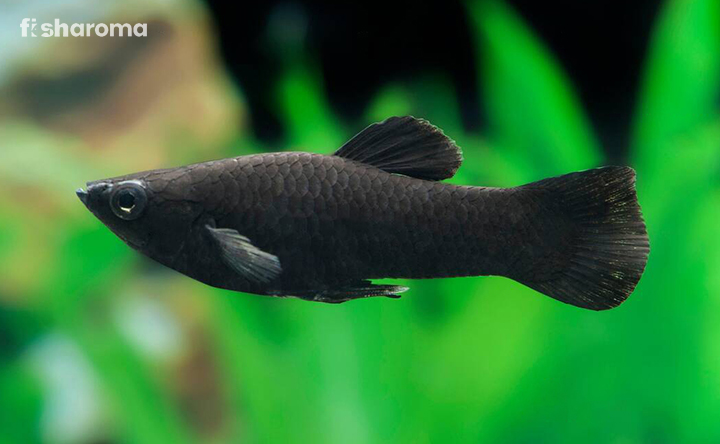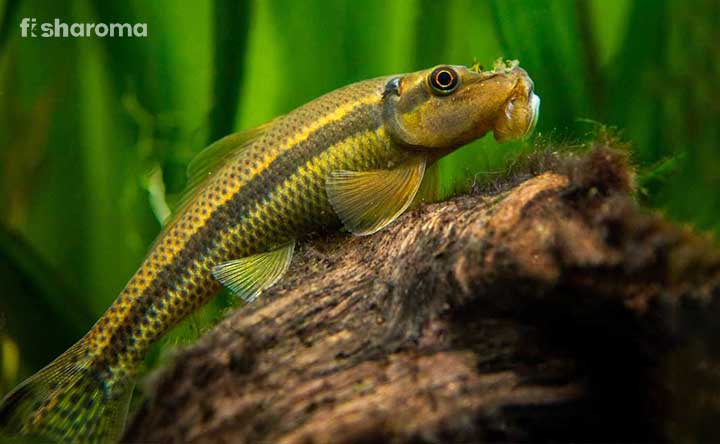Pufferfish – The Compete Care Guide for the Inflatable Freshwater Fish
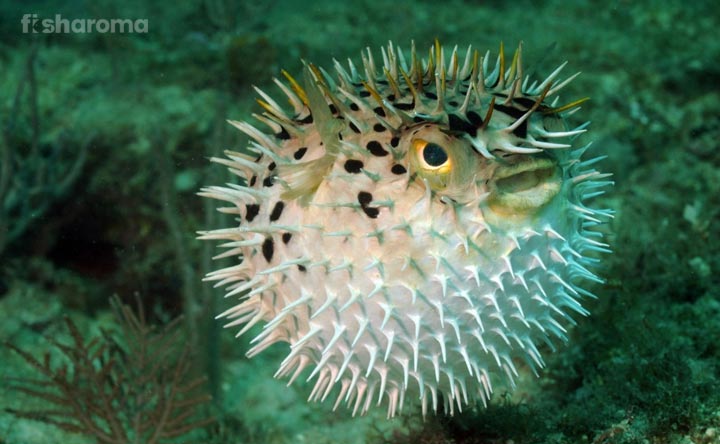
Having a perfect blend of adorability and scariness, Pufferfish are one of the most intriguing freshwater species that you can host in your aquarium. Although they are highly poisonous, they can make for great aquatic pets. Not only are they under-represented in the fishkeeping trade, but they are also very misunderstood.
Therefore, we have compiled a thorough care guide for Pufferfish so that all myths about them can be busted and more information about them can be attained. Remember, this is not your average aquarium pet; therefore, you need to take caution while handling them – not only for their safety but for yours as well.
Key Specifications of Pufferfish
Before we get to know this unorthodox aquatic pet in detail, let us take a look at some of its key features.
| Scientific Name | Tetraodontidae (Depends on variant) |
| Family | Tetraodontidae |
| Origin | Southeast Asia, South America, Africa |
| Size | Depends on variant |
| Color | Depends on variant |
| Care Level | Advanced |
| Lifespan | 10 Years |
| Temperament | Aggressive |
| Compatibility | Extremely low |
| Tank Size | 10-500 Gallons (Depends on variant) |
| Diet | Omnivore |
Overview
Pufferfish are famous around the world for their ability to inflate their bodies in the shape of a ball several times their normal size. They are poisonous and come in a variety of sizes and colors.
This unique species is known by a bunch of different names such as Ballonfish, Globefish, Blowfish, Blowies, Toadfish, Sugar Toads, Honey Toads, SeaSquab, Swellfish, Bubblefish, Puffers, among others. Some of the most common variants of freshwater Pufferfish are Fahaka Puffer, Dwarf Puffer, Pignose Puffer, Avocado Puffer, Amazonian Puffer, etc.
Pufferfish have a notorious temperament and are sensitive to water conditions. They are not easy to pet and require extreme care, which is why only advanced aquarists are recommended to pet them.
Origin & Habitat of Pufferfish
Pufferfish are a tropical fish that are found across marine and freshwater, and some even in brackish water. They have over 150 variants, out of which 40 live in brackish water and 29 variants live in freshwater.
This unorthodox aquatic pet belongs to the Tetraodontidae family, which is one of the ten families that fall in the Tetraodontiformes order. Tetraodontiformes emerged 40 million years ago from coral-dwelling species. Boxfish, Triggerfish, Porcupine Fish, and Filefish also fall in the same order as Pufferfish.
You can spot Pufferfish in the rivers and lakes of Southeast Asia, especially in India and Bangladesh. They are also seen in the Amazon River basin in South America and Congo as well as the Nile and other rivers in Africa. Although most of them are found in riverbeds with thick vegetation, some can also be seen in lakes such as the Mbu Pufferfish that is seen in Lake Tanganyika.
Appearance of Pufferfish
Pufferfish have long and tapered bodies with rounded heads and thin, hidden spikes that are visible when they puff their bodies. As such, they don’t have any scales.
They also have four large teeth that are fused into an upper and lower plate. These teeth help them crush the hard shells of mollusks and crustaceans. They have fuller lips that help them taste the texture of potential food and decide if it is worth eating. They also have bulging eyes.
Since their bodies are very rigid, they are completely dependent on their fins for balance and motion.
Some variants of Pufferfish contain tetrodotoxin, which is highly poisonous. It is present in their internal organs, such as the liver and in their skins. They are the most poisonous vertebrates in the world. They don’t directly produce the poison but instead gather bacteria that create the tetrodotoxin for them.
In the wild, they gather these bacteria through the food they consume from nature. Therefore, they are mostly safe in captivity as they generally won’t have access to those bacteria in your aquarium. In addition, not all Pufferfish are poisonous.
Size of Pufferfish
The size of Pufferfish depends on individual variants. Some can be of an inch (2.5 cm) in length while others can be about 3 feet in length (36”/91 cm).
Color of Pufferfish
Similar to their size, their colors also differ from variant to variant. Some Pufferfs have intense, wild colors and markings that pronounce their toxicity, while others have a more subtle, cryptic, or muted coloring which helps them camouflage or blend with the environment. Mostly, they are in pastel, yellow, green, brown, and white colors.
Behavior of Pufferfish
The most famous behavior of these adorable species is their ability to puff their bodies on a dime and use it as a defense mechanism when threatened. When they inflate themselves, spines protrude from their bodies thereby preventing their predators from eating them. Besides, they become several times larger than their actual size in the shape of a ball, making it even more inconvenient for their predators to consume them.
Speaking of their temperament, they are pretty aggressive and territorial despite their cute appearance. This aggression intensifies even more during breeding.
They are also known for their varied hunting techniques. Some are open water hunters such as the South American Puffer or the Golden Puffer that swim over sandy or rocky substrate looking for their prey. Other such as the Red-Tailed Dwarf Puffer and Crested Puffer are stealth predators that lurk in the shadows, hiding and waiting to attack their prey. There are also ambush predators such as the Congo Puffer that dig themselves into the sand and wait for their prey to come by, upon which they lunge upward towards them for the kill.
They also are known for spitting or blowing water over the substrate to uncover any prey that may be hiding there. It has also been seen that these fish spit water at their owner from the surface (if there is no tank lid) in order to ask for food.
Lifespan of Pufferfish
If taken care of well enough, your Pufferfish can live up to 10 years. This means that you are going to have to prepare yourself for a long-term commitment from your end in order to pet them at your home.
Diet of Pufferfish
Even though they are technically omnivores, the diet of a Pufferfish is predominantly meat-based. In their natural habitat, they mostly survive on snails, shellfish, crustaceans, and algae. In captivity, they are open to live, frozen, freeze-dried food, flakes as well as pellets. When you are feeding them live food, make sure you quarantine them in order to avoid infections. They can be given plant-based food once or twice a week.
Ramshorn Snails and common pond snails are an excellent food option for Pufferfish.
Their teeth keep on growing their entire life. It is important that they are fed hard-shelled food since it would help contribute to the growth of their teeth.
They are voracious and messy eaters and you would have to remove uneaten and leftover food from the aquarium pretty often in order to maintain the health of your tank.
The size of your Pufferfish will dictate how frequently you need to feed them. To be more specific, if your Pufferfish is under 2” (5 cm), then you will have to feed them daily; if they are 2-4” (5-10 cm) long, then you need to feed them every other day; else if they are more than 4” (10 cm) long, then they need to be fed 2-3 times a week. Make sure not to overfeed or underfeed your pet.
Tank Requirements for Pufferfish
It is very important to make your Pufferfish feel at home. This is why you need to replicate its natural habitat as much as possible in your aquarium. To help do that, we are providing the following parameters that you need to keep in mind while setting a tank for them.
Tank Size
The tank size that you would need for your Pufferfish will be dictated by which variant you are hosting in your tank. Therefore, we are providing the recommended tank size for various types of Pufferfish in the following table.
| Type of Pufferfish | Recommended Tank Size |
| Dwarf Pufferfish | 10 Gallons |
| Red-Tailed Dwarf Pufferfish | 10 Gallons |
| ImitatorPufferfish | 10 Gallons |
| Congo Pufferfish | 40 Gallons |
| South American Pufferfish | 40 Gallons |
| Crested Pufferfish | 55 Gallons |
| Golden Pufferfish | 125 Gallons |
| Mbu Pufferfish | 500 Gallons |
Remember, the aforementioned tank sizes are for a single Pufferfish only. They are anyways suggested to be kept alone. Read more about their tankmates in our ‘Compatibility of Pufferfish’ section. The larger the tank will be, the better it will be since they create a lot of waste.
Tank Lid
As we stated above, they are known for squirting water from the water surface to the owner to demand food. In addition, their spikes make them dangerous and you definitely don’t want any kids or your other pets such as a cat or a dog to come in contact with them. Thus, using a firm tank lid is a no-brainer here.
Substrate
The requirement of the substrate is also governed by the type of Pufferfish you are keeping in your tank, but mostly a soft, sand-based substrate works fine for them.
Filter
You need to invest in a good filtration system that produces low current but has the capacity of getting rid of wastes frequently since Pufferfish are pretty messy and produces wastes throughout the day.
Nature of Lighting
Provide moderate light to their tank for 8-10 hours in a day.
Presence of Flora
If your Pufferfish is a stealth predator, then you would have to provide thick vegetation in their tank since they would need those plants for hiding.
Ornaments
Include bogwood, aquatic rocks, stones and caves in your aquarium that may serve as hiding spots for your Pufferfish.
Cleaning Method
Pufferfish are messy! Therefore, cleaning their tank is even more important that cleaning tanks that host other freshwater fish. We recommend doing it every three weeks. Not only you have to scrape off algae from the walls and wipe it with a soft cloth dipped in lukewarm water, but you also need to clean the ornaments by putting them under running water and vacuuming the substrate. Just make sure that you are not using any soap or chemical-based product since that may jeopardize the health of your fish.
Water Type for Pufferfish
Regular tap water can be used for your freshwater Pufferfish as long as it doesn’t have a high concentration of iron or chlorine in it. In that case, you have to use filtered water.
Each variant of Pufferfish requires a different temperature, pH level, and hardness. The following parameters are the average requirements for most variants. Don’t forget to research beforehand about the needs of the specific variant you are planning to host in your tank.
Temperature
The temperature of the tank water should be 74-78° F (23-25° C).
pH Level
They prefer slightly alkaline water. Try to keep the pH level of your tank water between 7.0-7.6.
Hardness
The Carbonate hardness of the water should be 8-12 dKH.
Mineral Level
Since they don’t have scales, don’t let ammonia and nitrite level rise up in your tank. In addition, keep the nitrate level below 50 mg/l.
Replacement Procedure
Regular water replacement is essential in a Pufferfish tank because they create a huge amount of wastes and they are highly susceptible to diseases.
You can replace 10% of the tank water every 15 days or replace 25% of the tank water every month, whichever is more convenient for you. But whichever option you pick, try and stick with it. Whenever you add in a new batch of water, make sure its temperature, pH level, hardness, and mineral level is similar to the existing batch of water.
In addition, you shouldn’t replace the entire water content altogether since that will kill off the beneficial bacteria from the tank and might send your Pufferfish into a shock.
Compatibility of Pufferfish
These fish are extremely territorial and aggressive. An interesting aspect of their temperament is that it sometimes changes with age. In other words, it might happen that a juvenile is peaceful and does amazingly well in a community tank; however, the same juvenile can turn aggressive when it turns adult.
They are ferocious fin-nippers and will often attack other pet species (be it fish or non-fish pets such as any invertebrates) to kill boredom. Therefore, it is advised to keep them alone all the time.
They are not to be kept with their own kind as well. Only a few variants of Pufferfish can be kept in pairs or small groups, such as Ceylon Pufferfish, Figure 8 Pufferfish, and South American Pufferfish.
Breeding of Pufferfish
Breeding Pufferfish is extremely rare in captivity. This is why they are mostly spawned in commercial tanks. Moreover, different variants of Pufferfish have different water and tank requirements for breeding. But, probably the most difficult part for aquarists is to find a compatible matching pair for them given their highly aggressive nature.
Even if you do manage to find a matching pair, protecting the fries will be an extremely difficult challenge since Pufferfish are known for eating their own fries as soon as the eggs hatch. The fries are very sensitive to changes in water conditions and need to be fed Infusoria and freshly hatched Brine Shrimps. So, it’s no wonder why most people avoid breeding them.
Pufferfish Diseases
Due to the fact that they don’t have any scales, they are highly susceptible to attacks from ectoparasites; and the most common type of parasite to attack them is protozoa, which attacks their skins, gills, and fins.
They are one of the first freshwater aquarium fish to suffer from Ich. In this scenario, raise the temperature of the water temporarily by 2-3 degrees. Also, don’t hesitate to take the help of a veterinarian.
Quarantining your fish and any other objects before introducing them to your main tank is the key here since you never know what may act as the carrier of the parasite. In addition, be very attentive while maintaining the proper water parameters and tank conditions. A clean environment will go a long way in ensuring the good health of your Pufferfish.
Interesting Facts about Pufferfish
- Tetrodotoxin, the toxin present in a Pufferfish is 1,200 times more poisonous than cyanide. It doesn’t have any antidote and a single Pufferfish has enough toxins in them to kill 30 humans.
- Sharks are the only species that are immune to the toxins of Pufferfish.
- Pufferfish are considered a delicacy in Japan and their meat is called ‘fugu’. However, only licensed chefs are permitted to prepare them since if they are not prepared properly, it can lead to the death of those who consume it. Every year, there are many deaths from consuming these fish when not prepared properly.
- Some variants of Pufferfish can change their color like a chameleon and move their eyes independently.
Summary
Pufferfish are one of the most unique freshwater fish that one can pet. Despite their adorable appearance, they are highly aggressive and can pose a serious threat to their predators with the help of the toxins present in their bodies. Breeding them in captivity is also a big hurdle. This is why only expert aquarists are recommended to pet them. Even with our care guide, thorough research must be done to healthily pet them.
Care Guides for Similar Fish
If you are a fan of unconventional fish, then these species might interest you.
- Black Ghost Knifefish – Having the shape of a knife, these semi-aggressive freshwater species have a ghostly appearance that is unlike most fish you find in an average aquarium.
- Kuhli Loach – These nocturnal beings are peaceful by nature and have an unorthodoxly-shaped body and need to be kept in a group of 5-6 despite not being a schooling fish.
- Rope Fish – Despite their fearsome appearance, they are one of the most peaceful and docile freshwater species that you can host in your aquarium.

